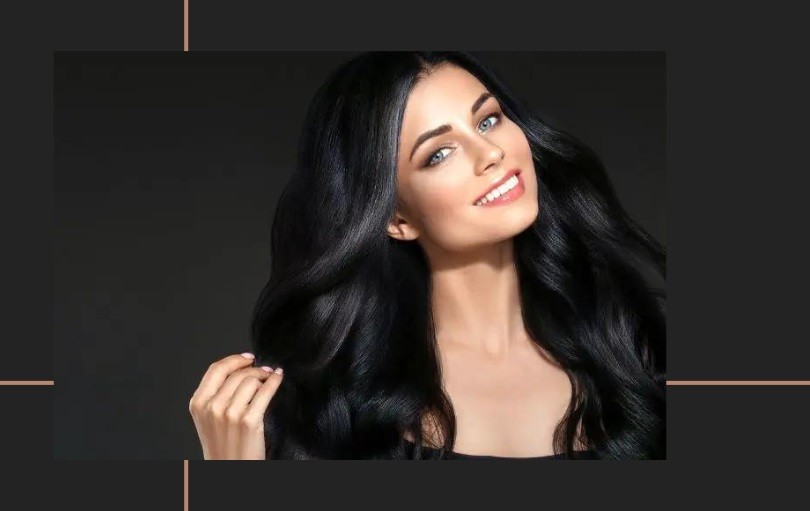Last Updated on March 28, 2025
Yes, black hair dye does fade over time. It is important to know how black hair dye fades and the factors that can contribute to its fading. The fading process can vary depending on several factors such as the quality of the dye used, the maintenance routine, and exposure to external factors like sunlight and heat.
Regular shampooing and exposure to water can also contribute to the fading of black hair dye. It is recommended to use color-safe shampoos and conditioners and avoid excessive heat styling to prolong the vibrancy of black hair dye. Periodic touch-ups may be necessary to maintain the desired black hair color.
know The Structure Of Hair

The Anatomy And Composition Of Hair
Hair is made up of a protein called keratin, which is produced by cells in the hair follicles. Each hair strand consists of three layers: The cuticle, cortex, and medulla.
The cuticle is the outermost layer of the hair, composed of overlapping scales that protect the inner layers.
The cortex is the middle layer and contains the pigment, called melanin, which gives hair its color.
The medulla is the innermost layer, often present in thicker hair strands, but it may be absent in fine hair.
How Hair Color Is Determined Genetically
- The color of your hair is determined by a combination of genetic factors.
- Two types of melanin, eumelanin and pheomelanin, are responsible for hair color.
- The amount and type of melanin produced by hair follicles determine the shade and intensity of hair color.
- Genes inherited from parents influence the production and distribution of melanin in the hair.
Role Of Melanin In Hair Color
- Eumelanin is responsible for the brown and black color of hair, while pheomelanin produces red and blonde shades.
- The ratio of eumelanin to pheomelanin primarily dictates whether hair will be dark or light.
- More eumelanin leads to darker hair color, while higher levels of pheomelanin result in lighter hair shades.
- Melanin production decreases with age, causing hair to gray or become white.
The structure of hair is essential for comprehending how black hair dye fades over time. The intricate composition of hair, including its anatomy and genetic determinants, plays a significant role in hair color. Below, we will delve into the details:
How Black Hair Dye Works?
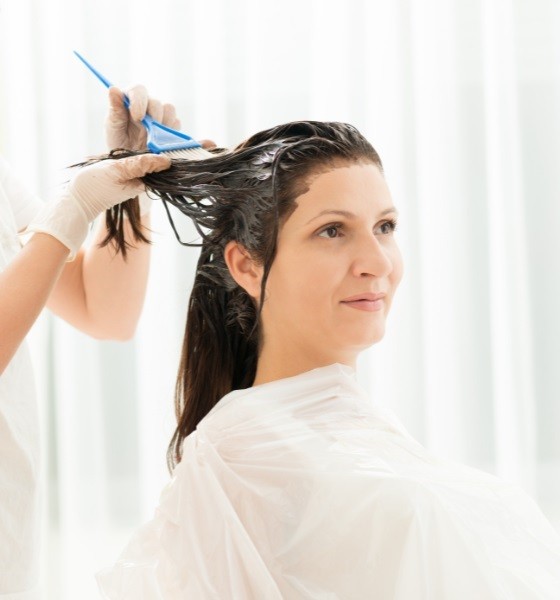
Black hair dye is a popular choice for those looking to achieve a bold, dramatic look. But have you ever wondered how black hair dye actually works? We will explore the different types of hair dye, the chemical process of coloring hair black, and how black dye interacts with natural hair color.
Different Types Of Hair Dye:
- Permanent hair dye: This type of hair dye uses a combination of oxidative agents and color molecules to permanently alter the hair’s natural pigment. It penetrates the hair cuticle and deposits color deep into the cortex, resulting in a long-lasting and vibrant black shade.
- Semi-permanent hair dye: Unlike permanent dye, the semi-permanent dye does not contain any ammonia or developer. Instead, it coats the hair shaft with a color that gradually washes out over time. While it offers temporary black color, it is ideal for those who want to experiment without commitment.
- Demi-permanent hair dye: Similar to semi-permanent dye, demi-permanent dye does not penetrate the cortex. It contains a small amount of developer, allowing for longer-lasting results than semi-permanent dye. It gradually fades after several weeks, providing a more natural-looking black hue.
Chemical Process Of Coloring Hair Black:
- Melanin pigmentation: Our natural hair color is determined by the presence of two types of melanin pigments, eumelanin (brown/black) and pheomelanin (red/yellow). When black hair dye is applied, it breaks down the existing eumelanin pigments, replacing them with black color molecules, resulting in a darker shade.
- Oxygenation process: Permanent hair dye, containing an oxidative agent such as hydrogen peroxide, works by oxidizing the natural melanin in the hair shaft. This chemical reaction allows the dye’s color molecules to bond with the hair strands more effectively, ensuring long-lasting results.
How Black Dye Interacts With Natural Hair Color:
- Grey or light hair: If you have grey or light hair, black hair dye will easily coat the strand, resulting in a deep, pure black color.
- Dark or medium brown hair: Black hair dye adds richness and depth to dark or medium brown hair. It intensifies the base color, providing a lustrous black shade.
- Red or blonde hair: Red or blonde hair does not have as much natural eumelanin pigment, which may result in a less intense black color. Pre-lightening the hair or using a higher concentration of black dye may be required to achieve the desired shade.
Hair Care Routine When Using Hair Dye
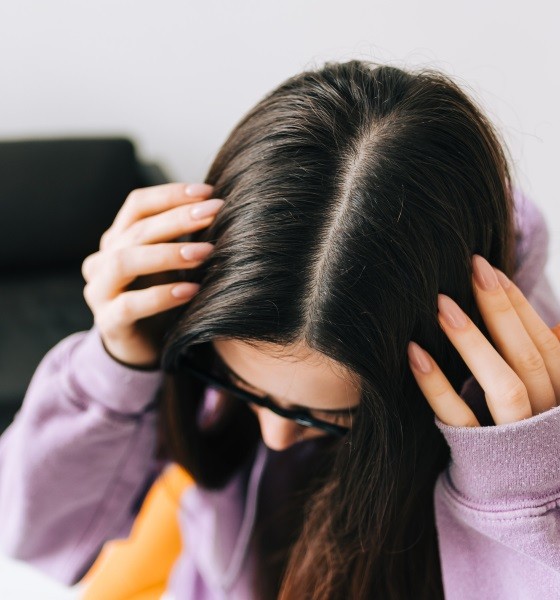
Maintaining the vibrant color of your black hair dye requires a dedicated hair care routine. By following a few simple steps, you can help prolong the longevity of your hair color and prevent it from fading prematurely. Here’s what you need to know about caring for your black hair dye:
Importance Of Using Color-Safe Hair Products
Using color-safe hair products is crucial in preserving the vibrancy of your black hair dye. Regular shampoos and conditioners can contain harsh ingredients that strip away the color, causing it to fade faster. Opt for color-safe alternatives that are specifically formulated to protect and enhance colored hair.
Look for products that are sulfate-free, as sulfates can be particularly damaging to dyed hair. Additionally, use color-safe hair masks and treatments to nourish and strengthen your hair, minimizing color loss.
How Washing Frequency Affects Dye Fade?
The frequency at which you wash your hair can impact how quickly your black hair dye fades. Washing your hair too frequently can strip away the natural oils that help seal in the color, leading to faster fading. Consider washing your hair every two to three days instead of daily, as this allows the color to settle and reduces the risk of color loss.
When washing, use lukewarm water instead of hot water, as excessive heat can also contribute to color fading.
Role Of Heat Styling And Uv Exposure
Heat styling tools and exposure to UV rays can both accelerate the fading of black hair dye. The excessive heat from styling tools like straighteners, curling irons, and blow dryers can cause the color molecules to break down, resulting in dull and faded hair color.
To minimize the impact of heat styling, use a heat protectant spray before using any hot tools. Furthermore, limit your exposure to direct sunlight, as UV rays can cause color oxidation and fade your hair dye. Wearing a hat or using UV protection hair products can help shield your hair from sun damage.
Incorporating these practices into your hair care routine will help you maintain the vibrancy of your black hair dye for longer periods, ensuring that your hair color remains stunning and eye-catching.
Hair Porosity To Maintain Hair Dye
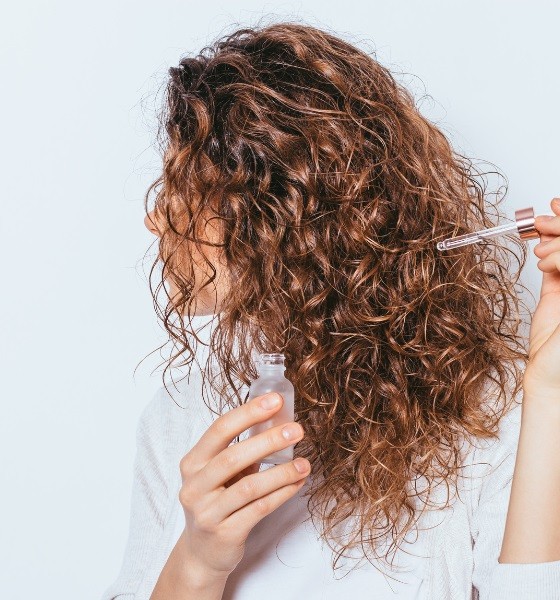
Hair porosity refers to the hair’s ability to absorb and retain moisture and other substances, such as hair dye. It is primarily determined by the condition of the hair cuticles, which are the outermost layer of the hair shaft. The three main types of hair porosity are low, medium, and high, each with its own unique characteristics.
Several factors can affect hair porosity, including genetics, excessive heat styling, chemical treatments, and environmental factors like sunlight and humidity.
Some key points about hair porosity include:
- Low porosity hair has tightly closed cuticles, making it resistant to absorbing moisture and color. This can make it difficult for black hair dye to penetrate the hair shaft, resulting in faded or uneven color.
- Medium porosity hair has slightly lifted cuticles, allowing for better absorption of moisture and color. It tends to hold dye well and maintain color vibrancy for a longer period.
- High porosity hair has overly lifted or damaged cuticles, leading to excessive moisture absorption and color loss. This can cause black hair dye to fade quickly.
Effect Of High And Low Porosity On Hair Dye:
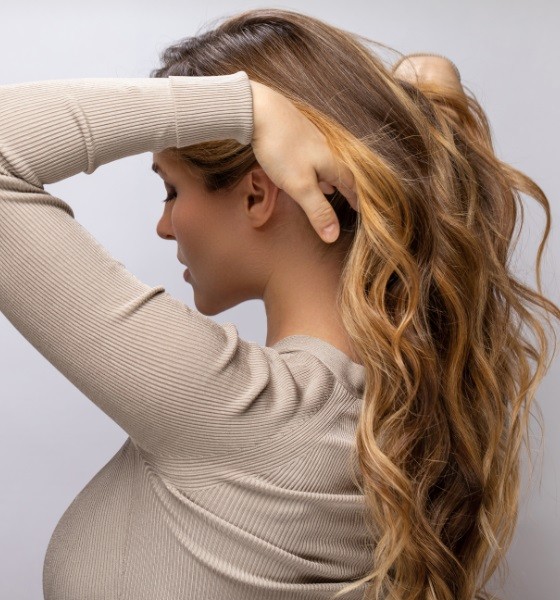
Hair porosity plays a crucial role in the longevity of black hair dye. Here’s how:
- High porosity hair: When black hair dye is applied to highly porous hair, the color molecules can easily escape through the damaged cuticles. This can result in rapid fading and color loss. Additionally, high porosity hair tends to be more prone to damage, making it difficult to maintain vibrant color for an extended period.
- Low-porosity hair: Black hair dye may struggle to penetrate low-porosity hair due to the tightly closed cuticles. This can lead to a lack of color saturation and an uneven dye distribution, resulting in a faded appearance. Low-porosity hair also tends to resist moisture, making it more challenging for the dye to penetrate and hold onto the hair shaft.
Tips For Enhancing Dye Longevity Based On Porosity:
Whether you have high or low-porosity hair, there are ways to enhance the longevity of black hair dye. Consider the following tips:
For high porosity hair:
- Pre-treat your hair with a protein-based conditioner or mask to help temporarily seal the cuticles and reduce porosity.
- Use a color-safe shampoo and conditioner specifically formulated for color-treated hair to minimize color fading and maintain vibrancy.
- Avoid excessive heat styling and protect your hair from sun exposure to prevent further damage and color loss.
- Consider using semi-permanent or demi-permanent hair dyes that do not require high levels of peroxide and can be gentler on highly porous hair.
For low porosity hair:
- Prior to dyeing your hair, clarify it with a clarifying shampoo or apple cider vinegar rinse to remove product buildup and open the cuticles slightly.
- Opt for a higher volume developer or seek professional help to ensure better color penetration into the hair shaft.
- Use a color-activating heat source, such as a hair steamer or a heated cap, during the dyeing process. The added heat can help open the cuticles and allow for better dye absorption.
- Deep condition regularly with a moisturizing mask or treatment to keep the hair hydrated and reduce the risk of color fading.
Touch-Ups And Root Retouching
Frequency And Process Of Touch-Ups
Keeping up with regular touch-ups is essential for maintaining the intensity and depth of your black hair color. Here are some key points to consider regarding the frequency and process of touch-ups:
- It is generally recommended to touch up your roots every 4-6 weeks to prevent noticeable regrowth and maintain a seamless color transition.
- To ensure optimal results, start by sectioning your hair and applying the black hair dye specifically to the roots, working your way toward the ends.
- Be mindful of the processing time indicated on the hair dye packaging, as leaving the dye on for too long can result in an uneven color distribution or potential damage to the hair.
- Rinse the dye thoroughly with cool water to help seal the color and prevent fading.
Tips For Successfully Blending Roots With The Rest Of The Hair
Blending the newly grown roots with the rest of your colored hair can sometimes be a challenging task. However, with the right approach, you can achieve a seamless and natural-looking result. Consider the following tips:
- Before applying the dye, apply a clear protective oil or petroleum jelly along your hairline, ears, and neck to prevent staining on the skin.
- When working on your roots, extend the dye slightly beyond the demarcation line to blend it with the previously colored hair.
- Use a wide-toothed comb or your fingers to gently comb through the hair during the dye application process to ensure even coverage and blending of color.
- Be cautious not to overlap the dye onto already colored hair, as this can lead to a buildup of pigment, resulting in an unnatural appearance.
- After rinsing out the dye, use a color-safe conditioner to nourish and hydrate your hair, helping to maintain the vibrancy and health of the color.
By following these tips and staying consistent in your touch-up routine, you can extend the life of your black hair dye and maintain a stunning, rich color that stays true to your style.
Frequently Asked Questions Of Does Black Hair Dye Fade?
Does Black Hair Dye Fade Over Time?
Yes, black hair dye can fade over time due to factors like washing, sun exposure, and hair products.
How Long Does Black Hair Dye Usually Last?
Black hair dye typically lasts between 4 to 6 weeks, but it can vary depending on hair type and maintenance.
Can You Prevent Black Hair Dye From Fading?
Yes, you can prevent black hair dye from fading by using color-safe hair products, avoiding excessive washing, and minimizing sun exposure.
Is It Possible To Fix Faded Black Hair Dye?
Yes, it is possible to fix faded black hair dye by using color-depositing shampoos, conditioners, or visiting a professional hair colorist for touch-ups.
What Should I Do If My Black Hair Dye Fades Unevenly?
If your black hair dye fades unevenly, it’s recommended to consult a professional hair colorist to assess the situation and determine the best course of action.
Conclusion
Black hair dye does fade over time, but there are ways to prolong its vibrancy. Taking proper care of your dyed hair is crucial. By using color-safe shampoo and conditioner, avoiding excessive heat styling, and protecting your hair from sun exposure, you can slow down the fading process.
Regular touch-ups and using color-depositing products can also help maintain the richness of your black hair dye. Consult a professional hairstylist for guidance and advice tailored to your specific hair type and needs. Embrace the beauty of black hair dye, knowing that with the right care and maintenance, your hair can continue to shine and make a statement for longer periods.
So, go ahead and enjoy your stunning black hair color with confidence and flair.

